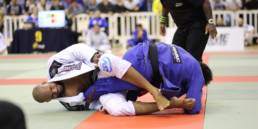Here’s another great article regarding leg locks and training with them at our academy! As I mentioned in the other article, it is even more imperative these days to keep up with the times and to learn, know, and understand the leg lock game.
It’s evident that leg/foot locks have become super trendy in BJJ/Grappling nowadays. It’s no wonder why, various top BJJ athletes, like Eddie Cummins and Garry Tonon, have used heel hooks to defeat numerous opponents under many different rule sets. Leg locks are indeed very effective and can take anybody out of their element! They are effective against opponents of differing size and skill levels. However, contrary to popular belief in many BJJ circles, leg locks are very technical submissions, that require a very good understanding of angles, positioning, control and a thorough understanding of the application of the submission itself. Furthermore, the damage caused by leg locks can be very serious, therefore requiring super extra care in their practice. So, below, you will find tips or a rule set if you will, of instruction for practicing and training with and for leg locks safely and effectively.
Tips For Training Leg Locks Safely
These are intended mostly for the “attacker”, which in my opinion, has as much responsibility as the defender when it comes to playing with safety in training:
- Avoid explosive movements when going for leg locks: You may want to use speed to control the position, but not for the submission itself. The submission movement must be very well controlled! Most sensible people who want to include toeholds and heel hooks in their grappling practice catch-and-release sparring when it comes to these two submissions. They fight hard to get to the right body position, then hunt for the correct hand position, and then hold the submission loosely (or apply it very slowly and very gently). At this point BOTH PARTNERS STOP MOVING and acknowledge that the submission probably would probably have worked if it had been applied hard and fast. All that is lacking in this type of sparring is the final explosion into the submission. If you understand how to control your opponent with your legs (by practicing the ankle lock and knee bar), and you know how to get to the correct hand position for the heel hook and toehold (by practicing catch-and-release sparring) then you can be fairly certain that your techniques will work in a live situation.
- Keep an eye at your opponent: Try to always keep looking at your opponent while applying the submission lock and even keep the communication and talk to him while doing it. It’s fine to ask “is it connected? Shall I let it go?” Each person has different limits, and the point when you reach that limit may be already hurting, so do not rely only on the tap to stop, keep an eye and communication with your training partner.
- Position before submission: Even though this is valid for any other submission, I feel that this is extra important for leg locks. The reason is, if you try to apply a submission before controlling the body, the opponent may be still in the middle of a transition or scrambling, and whenever the body moves/rotates, but the leg is stuck, the knee will certainly blow up. Therefore, make sure the opponent’s body is well controlled before applying the submission, especially heel hooks.
- Avoid using strength: Remember, the ligaments affected in these leg locks, especially heel hooks, are super sensible. No strength needed, it’s all about technique.
- Know when to let it go: Some times, your training partner himself may not understand the position and the danger involved. Personally, I put training partners in inverted heel hooks, but just controlling the position and, noticing that the person didn’t want to tap, I let it go and then proceeded to talk to the person after the rolling session about the technique and that it’s worth not resisting and tapping, pointing out the danger of that submission. Again, the focus is to learn together, not to get the tap.
- Ask the professor, in case of doubts. This is self-explanatory but always rely on the knowledge of your coaches or higher belts, if you have any doubts about the technique and how to apply or defend against it.
- Master the straight ankle lock and the knee bar: When applying 95% of leg locks you end up either facing your opponents head or facing his feet. The mechanics of controlling your opponent in these two positions are relatively similar whether you are doing a ‘safe’ straight lock or a ‘dangerous’ twisting lock. The straight ankle lock teaches you how to control your opponent’s legs, body, and body weight when you are facing his head. The mechanics and techniques to control your opponent in this position translate well to controlling your opponent when attacking with a heel hook (and some variations of the toehold). The knee bar is the cornerstone leg lock for learning how to control your opponent when you are facing his feet: once you master the knee bar you will have a lot more confidence maintaining positions where you are facing your opponent’s feet while attacking with other techniques (the toehold, for example). I should emphasize that just because straight ankle locks and knee bars are fairly safe submissions this DOESN’T give you permission to apply them ballistically. At full power and full speed, these ‘safe’ submissions can still screw up someone’s joints pretty badly (just like any other joint locks). Apply them with control, and remember it is far better to have someone counter your submission because you were applying it too slowly, rather than injuring them and losing a training partner.
- Pick your sparring partners carefully: Obviously, catch-and-release sparring doesn’t work if either party is A) too caught up in their ego to stop contesting a lock once it is on, or B) too inexperienced to know that they, or their partner, are in danger. Don’t do these leg locks with a newbie, or the class spaz, or the guy who won’t tap out unless he hears something pop or the guy who needs to submit everyone hard and fast.
Other general rules for training with leg locks:
- White and blue belts: Straight leg locks only! Straight ankle locks and knee bars only!
- Purple, brown, and black belts: Everything!
- Must discuss with a partner prior to rolling if it is okay to use leg locks!
- If you question your skill or knowledge of the leg lock game tell your partner you would rather not roll with leg locks!
- REMEMBER! NOT ALL TOURNAMENTS ALLOW ALL LEG LOCKS AT ALL BELT LEVELS! BEFORE COMPETING, FAMILIARIZE YOURSELF WITH THE RULE SET FOR THAT PARTICULAR COMPETITION. DO NOT GET DISQUALIFIED FOR NOT KNOWING THE RULES!


